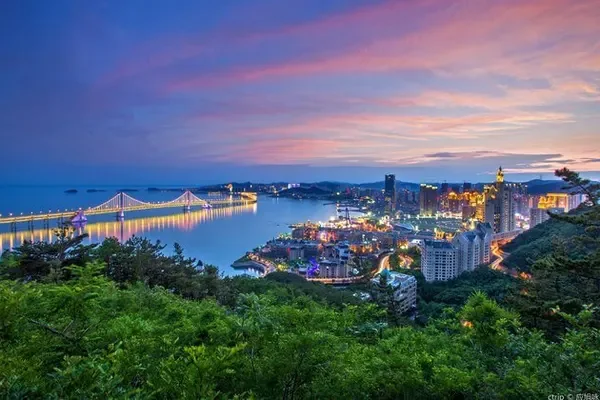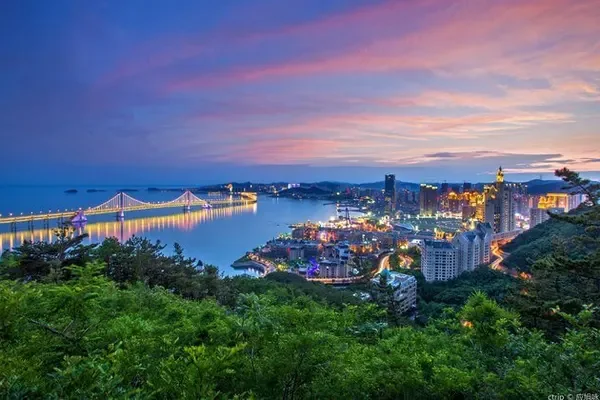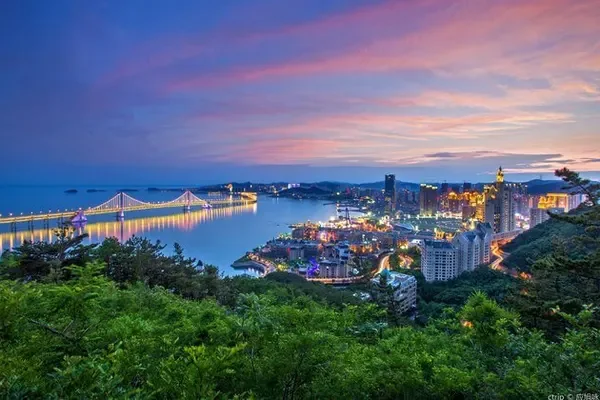Whenever it is late autumn, Beijing becomes Beiping described by Mr. Lao She.
At this moment, the Gubei Water Town at the foot of the Simatai Great Wall has gradually changed its color. The streets and alleys of Qianmo are covered with red leaves, and the winding water reflects colorful colors, which has the meaning of "Autumn in Beiping is heaven".
My favorite season, blue sky and warm sun, I came here to give myself three days of slow life, and have a date with autumn.


The border guarded Gubeikou area has a majestic terrain and was once an important place where troops were stationed, known as "the key to the capital".

Gubei Water Town was built here, backed by the undulating Simatai Great Wall, scattered with ancient buildings imitating the Ming and Qing Dynasties and the Republic of China, and awning boats swaying by on the rippling Tanghe River, making this place both The toughness and simplicity of a small northern town, and the delicacy and gentleness of a water town in the south of the Yangtze River.






One leaf knows autumn, and the ivy clinging to various parts of the town becomes the protagonist at this time.


Different from many popular red leaves viewing places, the red leaves in Gubei Water Town are a kind of beauty that is within reach.
Gray bricks and black tiles, small bridges and flowing water, inn ancestral halls, bluestone old streets... No matter where you go, there is always a touch of red around you, which makes the town unique.










Unknowingly away from the bustling center, walk into a narrow alley, enjoy the scenery that belongs only to you, as if you can hear the sound of fallen leaves in the quiet air.




Gubei Water Town is a poetic place.
And places full of poetry are places with stories.
History and culture are the richest inner soul of Gubei Water Town. The traditional Chinese culture is inherited and carried forward here, and the ingenuity of the craftsmen is worth tasting.
Sit down quietly, draw a sand swallow kite in the House of Wind Kite Culture Museum, make it colorful in your hands, and then let it fly gently under the guidance of the master. At that moment, it seemed to return to the most carefree days when I was a child.





Not far away, Yongshun Dyeing Factory is a time-honored brand founded in 1900.



In the courtyard with deep walls, various styles of dyed cloth are drying on the bamboo racks. There are colorful colors in front of your eyes, and you can see the faint sky and eaves corners when you look up.



The second floor is an experience space. Tie-dye a scarf or a piece of clothing by yourself, it has a unique look in this world.



Shadow puppetry is an intangible cultural heritage of the country, and the shadow puppet theater in the ancient town performs shadow puppetry every day. Experienced entertainers interpret various stories in the sound of gongs and drums, light and shadow, exquisitely engrossed.


As night falls, the beauty of Gubei Water Town is not yet over.


"If you don't go to the Great Wall, you are not a hero." The Simatai Great Wall, which accompanies the ancient town, is the only Great Wall that retains the original appearance of the Ming Dynasty.
Moreover, the Simatai Great Wall is the only Great Wall that is still open at night.
Climb slowly by the cable car, the ancient town slowly fades away in the field of vision, and the Great Wall under the lights gradually becomes clear.
The majesty and majesty of the day faded away, and the Great Wall at this time became soft in the beautiful halo.



Night tour of the Great Wall with lanterns, at the foot of the winding city wall dotted with lights, overlooking the ancient towns and houses with lights all over the city, and looking up at the precious night sky with bright moon and few stars.



The moon is as cool as water, history and today collide and merge at this moment.

Back in the ancient town, a romantic UAV Kongming Lantern Show is being staged here.
Amidst the sound of music, nearly a hundred drones are like flying Kongming lanterns, rising slowly in the Riyue Island Square, changing different patterns in the night sky, shining like stars, dancing like a dream.







The Great Wall Music Water Dance Show at Wangjing Tower is another visual feast presented by Gubei Water Town at night.
The combination of 3D holographic projection and fountain water dance creates an aerial phantom combining virtual and real in Wangjing Tower. Watching with concentration and breath, it seems to be sucked in by a powerful force, and you can see the interlacing of time and space in the misty universe, and the stars are moving.
Finally, the light, shadow and water dance music stopped abruptly, and the surroundings fell into darkness again. At that moment, I was in a trance, feeling that everything was both real and illusory.




Climbing to the top of the mountain, the hilltop church in the night is more romantic than in the daytime.

The outdoor terrace of the Peak Café is the best location in Gubei Water Town. Even though the air was clear in the autumn night, I still insisted on the last stubbornness, holding a cup of hot coffee on the railing, and yearning for the dim lights.



The poetic flavor of Gubei Water Town fills the corners and alleys, but the unexpected delicacies also make this place never lacking in human fireworks.
On both sides of Shuizhen Food Street are quaint authentic snack shops, such as bridgehead cakes, tofu corners, snail noodles, and claypot rice. If you catch up with the meal, you have to queue up.




The Chinese restaurants in Wuzhen Huiwenchang Pavilion and William Edgar Hotel focus on Huaiyang cuisine and Cantonese cuisine, which are very suitable for family and friends gatherings.





The roasted meat restaurant is located on the outskirts of the ancient town, but the business is booming. The signature Miyun roasted pork is fat but not greasy.


As the weather turns cooler, hot pot becomes the most popular delicacy. Guguan Hot Pot Restaurant is at the entrance of Shuizhen Food Street. The boiling copper pot emits a happiness-enhancing aroma, warming the cold air.


Because of staying in the ancient town, I unlocked a new way of eating breakfast - breakfast on board.
In the early morning light, sitting on a lightly swinging awning boat, enjoying an exquisite breakfast while admiring the style of the ancient town from another angle, the sound of the boatman's oars, the sound of the river swaying, and the singing of birds in the treetops played a gentle BGM.
A good day starts from this moment.




The silence at night, the sunrise and dew in the morning, do you yearn for Gubei Water Town like this as I do? Then, living here is the best way.
There are many hotels and inns of different styles in the ancient town to meet everyone's needs for vacation.
Shisanmei Women's Hot Spring Hotel is located near Wangjing Street. The wooden tone is warm and elegant, and each room has its own private hot spring.




The autumn night is getting cooler, and one courtyard is shrouded in dizzy lights and the mist of hot springs, which relieves the fatigue.

Hangu Villa Hotel is located in Langu District, surrounded by mountains and rivers in a quiet environment. The appearance of the hotel is very modern, and the rooms are also very stylish.


Sunshine floods the room through the floor-to-ceiling windows, and the lazy mode is turned on when you lie on the tatami or sofa, and you don't want to go out.



travel tips
1. Traffic
Self-driving: Navigate to "Gubei Water Town", get off at Simatai Exit No. 24 of Jingcheng Expressway, about 2 hours' drive from the city
Bus: Take the through train at Dongzhimen, the journey takes 2 hours, and the fare is 48 yuan
Train: Huaimi line train (Beijing North-Gubeikou) just opened at 9.30, then transfer to bus No. 69
2. Tickets
Tickets for Gubei Water Town are 140 yuan, Simatai Great Wall is 40 yuan, and two combined tickets are 170 yuan (free tickets or discounted tickets are available for booking hotels/hot springs in the ancient town)
Ancient Town + Great Wall + two-way cableway 280 yuan (one-way cableway 220 yuan)
3. Red leaf season limited tips
(1) Try to avoid weekends, there will be far fewer people.
(2) Walking to the outskirts of the town, you will find many places with dense red leaves but few tourists, such as the alley at the entrance of the Eight Banners Inn, the alley outside the side gate of Yongshun Dyeing Workshop, the road between the Royal Melon Garden and the stone slabs outside Yang Wudi Temple Roads and alleys, some steps, alleys, and stone bridges that go down from the main road to the river and walk along the river bank.
(3) The saturation of red leaves is high. It is recommended to wear plain and simple clothes, and rent a set of Hanfu to match the buildings in the scenic spot. Every autumn, the scenic spot will hold some activities. This year's Red Leaf Festival has a two-dimensional theme. Many cosplay and Hanfu seem to make the ancient town reproduce its history.
(4) In autumn, the temperature difference between morning and evening is large, so keep warm.



